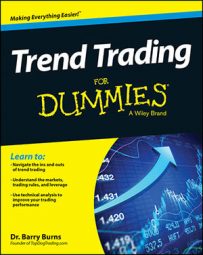Newbie traders are often targets of hype promoted on the Internet and elsewhere, promising get-rich-quick approaches to trading.
Beware of anyone promising overnight success. Trading is a real, legitimate profession and, like any other profession, requires a thorough education, a dedication to earnest study, development of skill, lots of experience, and a commitment to personal growth in the process.
No e-book, magic indicator, or forex robot is going to make you rich. You have to do the work yourself and do it well.
Becoming a risk-management expert
Profitable traders tend to focus on risk management more than making profits. When you have a profitable trading methodology, the most important thing is to be hyper-diligent in managing your risk.
You need to keep your losses small, and let your winners run. You achieve risk management through personal discipline, the use of protective stops, diversification, and hedging, among other things.
Documenting your trading
You can’t measure numbers you don’t have. Documenting your every trade isn’t the fun part of trading, but you must document your every trade to improve yourself as a trader.
Businesses live and die by their numbers. Good businesspeople meticulously watch their income, expenses, profits, losses, balance sheets, and other financial reports so they know the strengths and weaknesses of every area of their business.
Professional athletic clubs do the same. They have the statistics of every player, and they video tape every game of both their team and their opponents. They use this documentation in the never-ending pursuit of improvement.
As a trader, you can improve your chances of success by documenting every trade, including the following information:
The time and price of your entries and exits
The reason for your trades
The mistakes you made
What you were thinking when you took each trade
How you were feeling when you took each trade
Reviewing your trades
At the end of each day, week, and month, review your trades. Print out your charts and match them to your entries and exits. Look for patterns of your thoughts and feelings as you entered trades. You can use those patterns as indicators for future trades. Look for patterns of mistakes you habitually make. For example, do you
Overtrade?
Get out of trades too soon?
Hesitate too long to enter your trades?
Constantly trade against the trend?
Knowingly break your trading rules based on gut feel?
No one ever becomes a perfect trader, but if you can drastically reduce the habits of making the same mistakes over and over, you can move into the profitable trader category.

